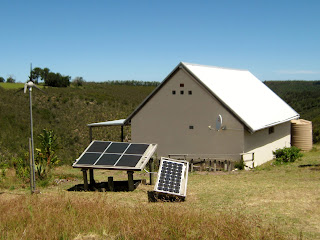The Northern Cape.
South Africa's largest, undiscovered and untouched Province.
-Totally overlooked by the local and international tourist.
The Northern Cape, the 'real secret' province.
Some highlights include:-
1. Visit the diamond town of Alexander Bay.
2. See the 300.000 plus seal colony, at Kleinzee.
3. See the worlds largest desert floral garden. (July and Sept)
4. The Windmill Museum, at Loeriesfontein.
5. Riemvasmaak hot springs, next to Augrabies Falls Nat park.
6. Verneuk Salt Pan, near Brandvlei.
7. Kalagadi Nat Park, one of South Africa's best self-drive, safari parks.
8. Lamberts Bay, The crayfish capital and famous bird colony.
9. The Richtersveld Nat Park, South Africa's most remote Park.
 |
| The famous Quiver Tree forest |
 |
| Karoo Jacuzzi, Williston. |
The Northern Cape is a photographers dream.
Most tourists only drive up and down along South Africa's Southern
and Eastern coastline.
They totally miss the West Coast and our real desert areas
in the true heart of the country.
The people who survive in these parts are extra tough.
Try visit the town of Hotazel, comes from the name 'Hot as Hell'.
 |
| Not a UFO. A social weavers nest. |
 |
The worlds largest post box, Calvinia |











